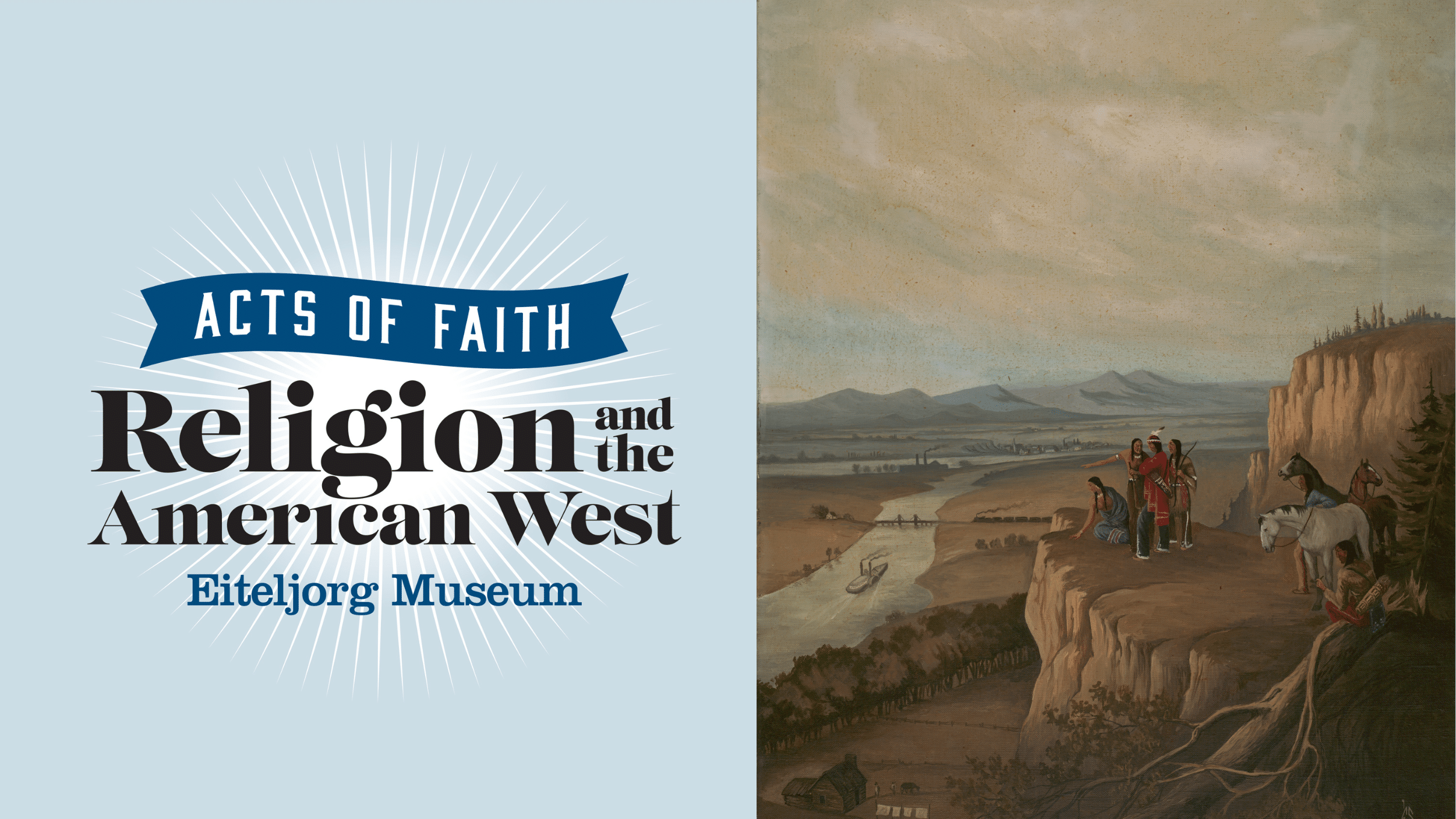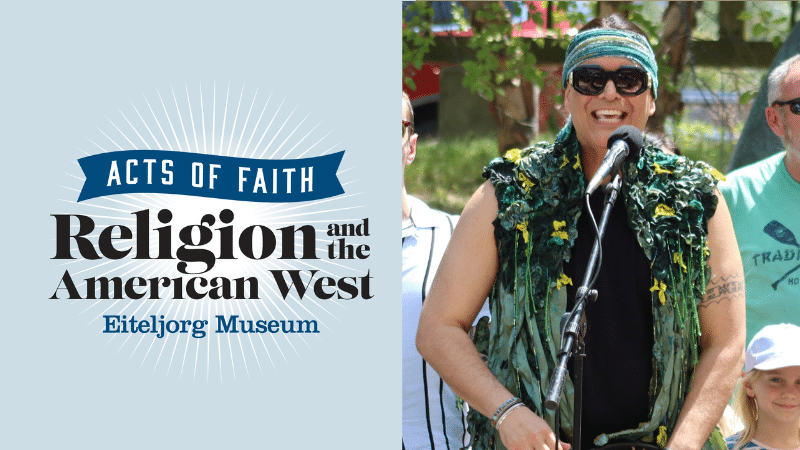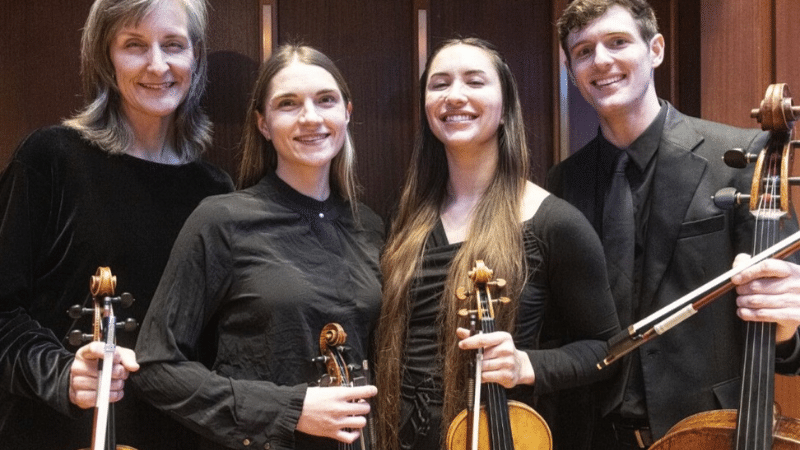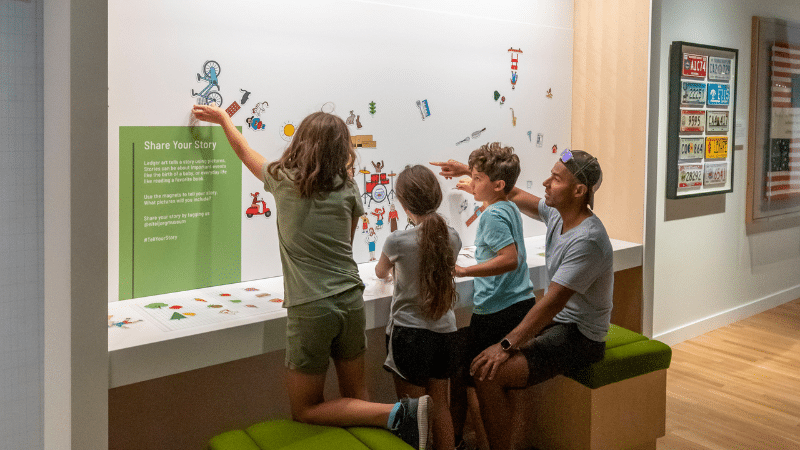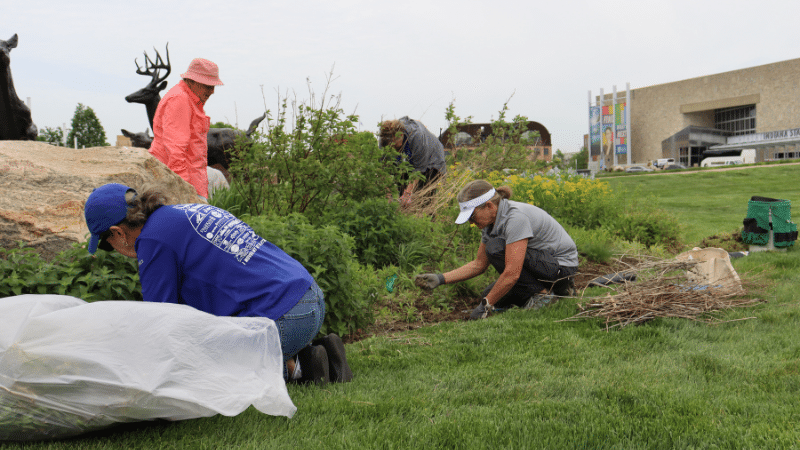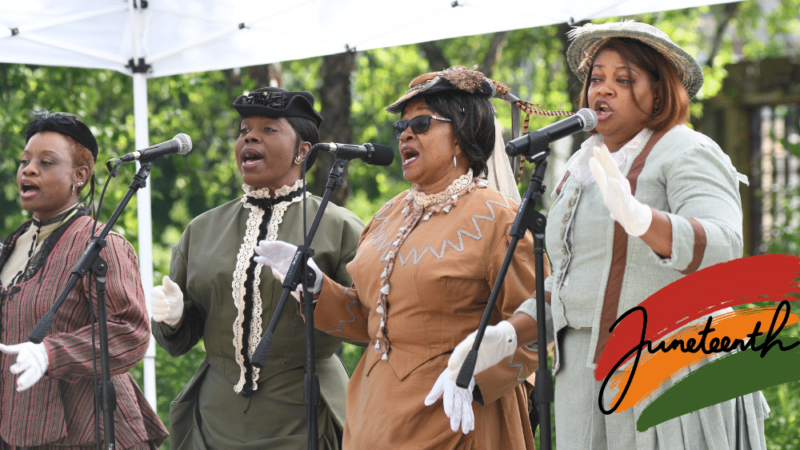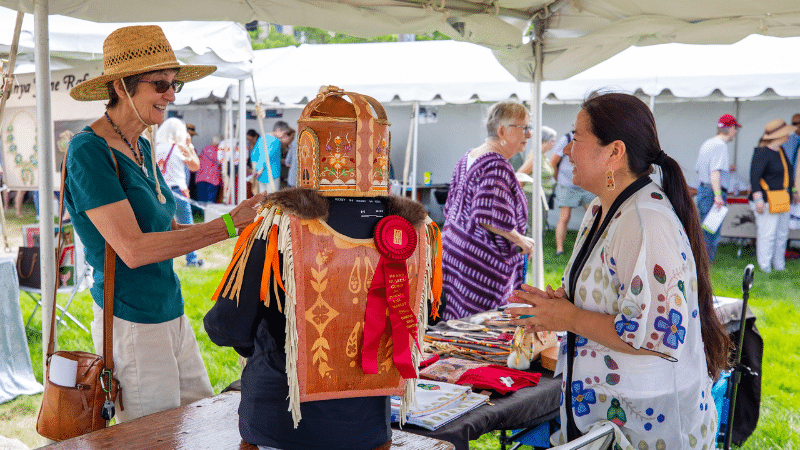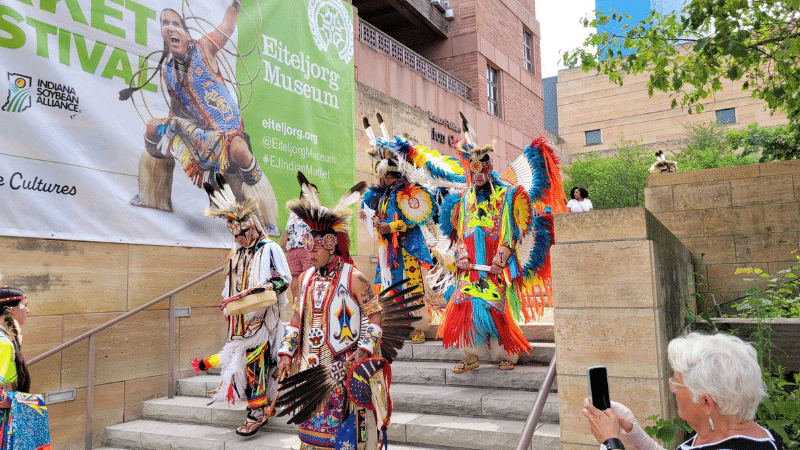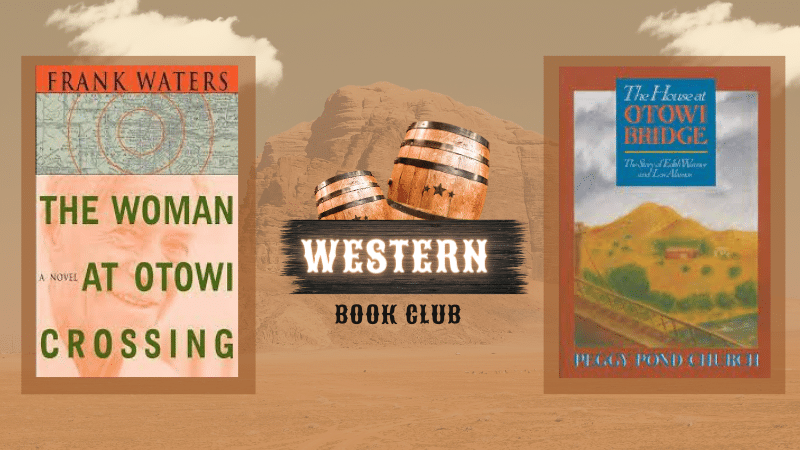Eiteljorg Insider: Five Questions with Collections Manager Rebekah Ryan
By: Sophia Holt-Wilson, Eiteljorg Marketing and Communications Intern

Rebekah Ryan with Okanagan IV by Joe Feddersen (Confederated Tribes of the Colville, born 1953), an installation piece in last year’s Sense of Beauty exhibition.
Rebekah Ryan is the Collections Manager at the Eiteljorg. She has been with the Collections department in various capacities (from volunteer to fellow to staff member) for seven years. In the fall, she taught as an adjunct a Collections Care and Management course in the Museum Studies program at IUPUI.
Here are five questions to help you get to know Rebekah:
1. What is your favorite piece in the museum?
There are so many wonderful pieces in the Eiteljorg collection! There are a series of seven miniature articulated mask pendants in our Northwest Coast Galleries right now. They were all made by Kevin Cranmer (Kwakwaka’wakw) in 2004 and are incredibly small – maybe 3 or 4 inches at most. They’re so delicately carved and painted, and they have bright inlaid shell that catches your eye. Only when you get closer, do you realize that they have moving pieces, too. Even if you are unfamiliar with the Beings they represent, I think they command your attention. They let you know that they’re important.
Since I spend so much of my time with the 90 percent of items that aren’t on view, I’d be remiss if I didn’t also share one piece that is in our storage vault. We have a small painting by George Morrison (Grand Portage Band of Chippewa, 1919 – 2000) called Three Fates that was acquired a few years ago. It is a beautiful Modernist abstraction of three figures in a flurry of reds, yellows, greens and whites. The arrangement of the triangles and ovals that make up the forms reminds me of stained glass. It is a spectacular piece.
2. What’s something about you that people would be surprised to know?
I have a passion for sci-fi, particularly shows with the word “star” in the title. I’m in the middle of watching Star Trek: Deep Space Nine (an underrated classic!), and am starting a re-watch of the 2004 Battlestar Galactica remake. Bear McCreary’s music alone is worth a watching of Battlestar.
3. If you could instantly learn any skill, what would it be?
Irish step dancing. Maybe it helps that my family has Irish roots, but I grew up watching Michael Flatley’s Lord of the Dance and was just mesmerized. Step dancing is incredibly athletic and involves a lot of coordination. The classes were also much too expensive when I was growing up. So instant skill? Sign me up!
4. I understand you have a background in music. Do you find that there is any overlap between it and your role at the museum, and do you use it as a collections manager?
My entire family is musical. We all can carry a tune and play instruments in a not-at-all-professional-but-extremely-devoted-amateur sort of way. We somehow never managed to do the Partridge Family band thing, though. I play the oboe, and that is a pretty unique sound to mix with guitar, piano, French horn, and drums. Come to think of it, we probably should try some jazz…
There are so many ways my background in music has influenced my work! Singing or playing an instrument demands that a person uses both sides of their brain (the analytical and the creative) at once. I think that blending of precision and artistry plays a role in most of my day-to-day tasks — from drafting an email to constructing a custom archival enclosure for a pot.
My brother and I spent most childhood breakfasts being quizzed on everything from the names of Pink Floyd’s band members to the instruments we heard in a Dvořák symphony by my dad. I think that prompted me to be a bit of a fact hound. It is not at all surprising to me that I spend much of my workday collecting and organizing information about our collection so that folks can refer to it in our collections management system.
There are also very particular things about being an oboist that overlap with the care of collections. As a 10 year-old with a wood, plastic, and metal composite instrument, I learned quickly that I should never leave it where it could get extremely hot or cold, and that I needed to keep a water-filled humistat in my case to maintain the humidity inside, otherwise the wood components could crack in the wintertime when it’s very dry. Repairing a crack on the wooden bore of an oboe can be tricky, and it can change the resonance of the instrument significantly. Sometimes an instrument is permanently ruined when it cracks. So, it’s best to simply avoid the crack by maintaining the instrument’s storage environment. When I started to learn about how to care for museum collections, it made complete sense to me that museums are kept at a relatively neutral temperature and humidity to try to keep all of the different materials – from bronze to works on paper to porcupine quills – stable (so they do not rust, warp, crack, or fade).
I have also loved learning about the significance of music for other people while working at the Eiteljorg. Words, tunes, and rhythms are powerful in many different ways. Depending on the Indigenous community they come from, some of the collection items need to be sung to, danced, or fed. We welcome members from these communities to do this for them. This caretaking by an item’s community members or elders is just as important (if not more so), than what our department does to make sure an item’s records, storage environments and exhibition spaces are safe and accessible.
5. Do you have any tips for working from home?
Remember to get up from the chair and stretch, take time to appreciate nature every day, and, if you’re a cookie hound like me, be sure to put half that batch you just baked in the freezer!



